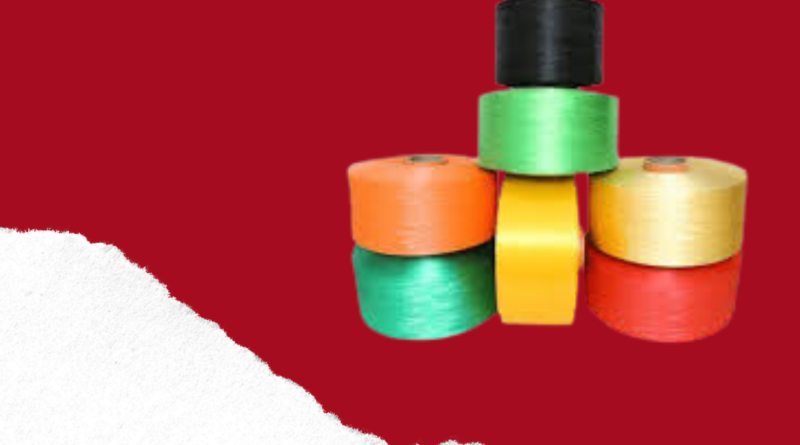Why PP Fibrillated Yarn is a Popular Choice for Netting and Twine Manufacturing
Polypropylene (PP) fibrillated yarn has gained significant popularity in the textile and manufacturing sectors, especially in the production of nets, twines, and other industrial applications. The term “fibrillated” refers to the process by which the yarn is split into smaller strands or fibrils, enhancing its surface area and making it ideal for uses that require strength, durability, and flexibility. PP fibrillated yarn, a derivative of polypropylene, is renowned for its superior qualities such as resistance to abrasion, moisture, and chemicals, making it a perfect choice for various netting and twine applications. This article delves into the reasons behind the increasing demand for PP fibrillated yarn in manufacturing processes, particularly in the production of nets and twines.
Understanding the Manufacturing Process of PP Fibrillated Yarn
The production of PP fibrillated yarn involves a unique process that sets it apart from conventional yarns. Polypropylene is first extruded into a single filament, which is then split into smaller strands. This “fibrillation” process creates a fibrous texture, which provides the yarn with improved flexibility, softness, and strength. The fibrillated structure increases the yarn’s surface area, making it ideal for creating nets and twines that require more robust, long-lasting properties. Additionally, PP fibrillated yarn’s lightweight nature contributes to reducing the overall weight of the final product without compromising its durability.
Key Advantages of Using PP Fibrillated Yarn in Twine Manufacturing
Twine made from PP fibrillated yarn has numerous advantages over traditional twines. One of the most significant benefits is its enhanced tensile strength. Due to the fibrillated nature of the yarn, the twine produced is more resistant to breaking and can endure heavy loads and environmental stress. This makes it ideal for use in agricultural, construction, and packaging applications where strong, reliable twine is essential. Moreover, the PP fibrillated yarn’s ability to withstand UV radiation and its resistance to rotting or degradation make it highly suitable for outdoor applications, such as gardening, bundling, and securing goods in harsh weather conditions.
Durability and Resistance to Environmental Factors
Polypropylene yarn, particularly when fibrillated, is highly resistant to environmental factors such as moisture, UV rays, and chemicals. Unlike natural fibers, PP fibrillated yarn does not absorb water, making it resistant to mildew and mold. It also does not degrade under prolonged exposure to sunlight, ensuring that twines and nets made from this material maintain their strength and functionality even in harsh outdoor environments. For these reasons, PP fibrillated yarn has become a go-to option for applications where weather resistance and long-lasting performance are essential, such as in agriculture and marine industries.
The Cost-Effectiveness of PP Fibrillated Yarn
Another compelling reason why PP fibrillated yarn is preferred in netting and twine manufacturing is its cost-effectiveness. Polypropylene, the base material for fibrillated yarn, is relatively inexpensive compared to other fibers like polyester or nylon. The fibrillation process does not significantly increase the production cost, making PP fibrillated yarn an affordable option for large-scale manufacturing. This cost-effectiveness allows manufacturers to offer high-quality, durable nets and twines at competitive prices, benefiting industries that require bulk quantities of these materials for packaging, agriculture, or other industrial applications.
Lightweight and Easy to Handle
PP fibrillated yarn is lightweight, which makes it easier to handle during manufacturing and usage. For example, nets and twines made from PP fibrillated yarn are easier to transport, store, and install compared to heavier alternatives. The lightweight nature of PP fibrillated yarn is particularly advantageous in industries like agriculture, where large quantities of twine and nets are used for securing crops, plants, and fencing. Moreover, the ease of handling and transportation reduces labor costs and simplifies the overall process for manufacturers.
Why PP Fibrillated Yarn is in Demand in India
India has seen a significant rise in the demand for PP fibrillated yarn due to the country’s booming textile and manufacturing industries. The versatility of Polypropylene yarn makes it an attractive choice for a variety of applications, and the growing need for nets and twines in sectors such as agriculture, construction, and fishing has led to a surge in its production. In particular, fibrillated yarn in India has found a prominent place in the agricultural sector, where it is used to create nets for crop protection, fencing, and support structures. As a result, manufacturers and suppliers of PP fibrillated yarn are increasingly focusing on meeting the demands of the Indian market, providing high-quality products that cater to both local and international markets.
The Versatility of PP Fibrillated Yarn in Netting Applications
The versatility of PP fibrillated yarn is another key reason for its widespread use in netting applications. This type of yarn can be used to manufacture a wide range of nets, from lightweight insect nets to heavy-duty fishing nets and even construction site safety nets. The fibrillated texture allows for greater flexibility, ensuring that the nets are both strong and lightweight. This versatility extends beyond netting to include other applications like tarpaulins, packaging straps, and ropes, where strength, durability, and resistance to environmental factors are critical. As industries continue to look for efficient and cost-effective materials, PP fibrillated yarn’s versatility makes it a top choice.
PP Fibrillated Yarn: A Sustainable Option for Netting and Twine Manufacturing
In recent years, sustainability has become a primary concern for manufacturers worldwide. PP fibrillated yarn is considered a more sustainable alternative to other synthetic and natural fibers. Polypropylene is a recyclable material, and products made from PP fibrillated yarn can often be recycled at the end of their life cycle. The durability and resistance of PP fibrillated yarn also mean that products made from this material have a longer lifespan, reducing the frequency of replacements and contributing to a more sustainable approach in industries like agriculture and fishing. Furthermore, the production process for polypropylene yarn is relatively low in energy consumption compared to other materials, making it an environmentally friendly choice for manufacturers.
The Role of PP Fibrillated Yarn in the Global Market
As the demand for high-quality, durable, and cost-effective materials continues to grow, PP fibrillated yarn plays a significant role in the global market. Manufacturers around the world are increasingly turning to this versatile material for various applications. From agriculture to industrial packaging, the demand for strong, lightweight, and environmentally resistant twines and nets is rising, and PP fibrillated yarn is meeting these needs. With increasing investments in production technologies and growing awareness of its advantages, PP fibrillated yarn is expected to continue to be a preferred choice for netting and twine manufacturing on a global scale.
Conclusion: The Future of PP Fibrillated Yarn in Netting and Twine Manufacturing
In conclusion, PP fibrillated yarn has earned its reputation as a popular choice for netting and twine manufacturing due to its remarkable qualities such as durability, resistance to environmental factors, cost-effectiveness, and versatility. The growing demand for PP Fibrillated yarn in India and across the globe highlights the expanding role of this material in industries ranging from agriculture to fishing and construction. As manufacturers continue to seek more sustainable, cost-efficient, and reliable materials for their products, the role of PP fibrillated yarn in netting and twine production will only become more significant, further cementing its place as a leading material in the textile industry.
Frequently Asked Questions (FAQs)
1. Is PP Fibrillated Yarn available in different colors?
Yes, PP fibrillated yarn can be produced in a range of colors, although natural (white) is the most common. Manufacturers can add pigments during the production process to create yarn in various colors based on customer preferences or specific application needs.
2. Can PP Fibrillated Yarn be recycled?
Yes, polypropylene yarn, including fibrillated yarn, is a recyclable material. Products made from PP fibrillated yarn can typically be recycled at the end of their life cycle, contributing to sustainable practices in industries where the yarn is used.
3. Is PP Fibrillated Yarn easy to handle during manufacturing?
Yes, PP fibrillated yarn is relatively easy to handle due to its lightweight nature. This makes it easier for manufacturers to work with, reducing labor costs and simplifying the production process. It is also easier to transport and store compared to heavier yarns.




